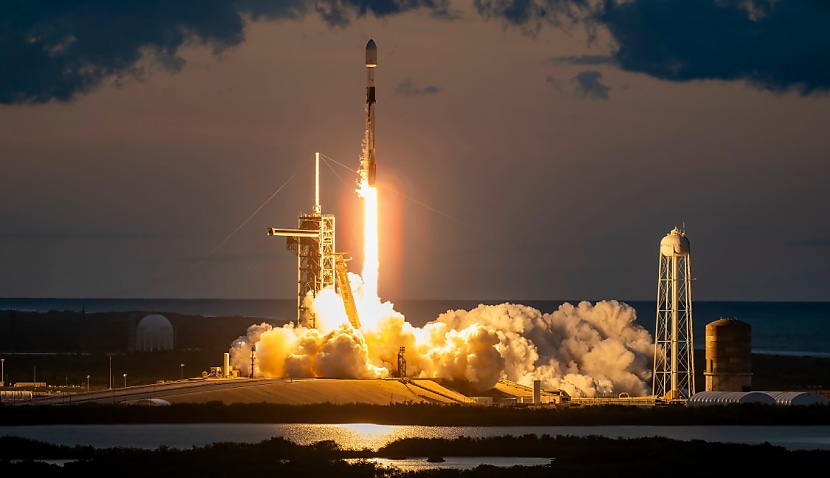
The launch firm gave little away about the TD7 mission and even ended the usual webcast before the payload deployed “at our customer’s request”.
While SpaceX reportedly confirmed TD7 was a “communication satellite”, other outlets speculated it could be an earlier announced “roadside assistance in space”-style servicing vehicle.
Optus has not publicly confirmed its involvement, but outlets called the spacecraft “Optus X” after the Federal Aviation Administration (FAA) used the term in its flight schedule and the US Space Force in its launch weather forecast.
The payload blasted off onboard a SpaceX Falcon 9 and will reportedly be positioned in geostationary orbit at 87.75 degrees.
News website Space & Defence reported that Optus X is built on the GeoStar-3 bus by Northrop Grumman Innovation Systems.
“The X in the name is believed to refer to a military X-band payload previously used by Optus on its 2003-era C1 satellite,” it said.
“That satellite was partially funded by Australia’s Defence department and had a dual military/civilian purpose. An Optus spokesperson would only say they procured the spacecraft on behalf of another organisation.”
It comes after Space Connect’s sister brand, Defence Connect, reported in 2022 how Northrop subsidiary SpaceLogistics would install extension pods on the on-orbit servicing vehicle called the Mission Robotic Vehicle (MRV).
The vehicle would contain so-called “extension pods” (MEP) that could help extend the lives of other satellites running out of fuel, as well as provide “repair” and “relocation” services.
Optus completed a purchase agreement with SpaceLogistics to install one of the MEPs on its D3 satellite in 2025.
“Our contracts with SpaceX and Optus are tangible evidence of our momentum and commitment to deliver second-generation on-orbit servicing technologies to the satellite industry,” SpaceLogistics said.
“We are thrilled to have Optus as our premier MEP customer as we continue pioneering the future of space and expanding the realm of what is possible with on-orbit servicing and sustainment.”
Defence Connect reported how the MEP is tipped to provide six years of life extension for a typical 2,000-kilogram satellite in geostationary orbit.
“Optus’ partnership with SpaceLogistics will leverage their cutting-edge MRV and MEP capability to increase the life of Optus’ D3 satellite. This innovative move, along with the future launch of Optus 11, will benefit our customers,” Optus said.

Adam Thorn
Adam is a journalist who has worked for more than 40 prestigious media brands in the UK and Australia. Since 2005, his varied career has included stints as a reporter, copy editor, feature writer and editor for publications as diverse as Fleet Street newspaper The Sunday Times, fashion bible Jones, media and marketing website Mumbrella as well as lifestyle magazines such as GQ, Woman’s Weekly, Men’s Health and Loaded. He joined Momentum Media in early 2020 and currently writes for Australian Aviation and World of Aviation.
Receive the latest developments and updates on Australia’s space industry direct to your inbox. Subscribe today to Space Connect here.












